The beating heart of design – Heroes of the Storm
What’s the most popular online PvP map that exists today?
Numbers-wise, it would be a certain three-lane map with towers and minions and two cores, with various bushes or other spots for players to hide in, and involves five players fighting each other over and over.
… Yes, I am talking about THE three-lane Multiplayer Online Battle Arena (MOBA) map.

Brought into the public eye by Defence of The Ancients (DoTA), a player mod of Warcraft, and subsequently used by its spiritual successors – League of Legends (LoL), DoTA 2 and more, the simple ‘tower-defence’ map is the standard battleground in MOBAs today. Some games change up this formula a bit, with one or two-lane maps and fighting for control rather than core destruction, but the mechanics generally remain the same. Characters still fight, ambush each other, and sneak about within these lanes and the fog-of-war covered areas between them.
As far as game design goes, the lanes-and-towers map is a tried-and-true staple for MOBAs, giving each champion a level killing field, so rather than change something whose popularity and versatility has been proven, these games usually focus on novel hero mechanics and cosmetics to provide for a colourful, rich game experience even on familiar ground.
Neither heroes nor skins, however, change the underlying mechanics of the game or the overall player experience. At heart, MOBAs are games where players are placed together in teams and made to face other teams, with success dependent on the skill of each individual – and their capacity for teamwork. Unfortunately, this reliance on other people’s performance means a team can be brought down by its weakest link, so it is no surprise that MOBAs like League of Legends are infamous for their hostile player interactions.
The need for each player to individually gather experience and gold to advance their character, balancing their individual needs against that of the team, is one of the primary reasons why MOBAs exhibit an astonishing lack of cooperation and teamwork at times. The individual needs lead to intra-team competition, with teammates fighting over kills and arguing over who should stay in their lanes. Things can get particularly bad if a team is losing, but even if a game isn’t going downhill, personal insults from the opposing team can easily drive a new player to call it quits even before their first game is over.
This is the standard for MOBA mechanic design – one that few diverge from today.
Perhaps the most notable of those which do is Heroes of the Storm (HoTS), a game developed by Blizzard Entertainment and termed a “hero brawler”. Released in June 2015, HoTS differs widely from other existing MOBAs in a number of ways. Certainly, familiar features such as lanes, towers, and heroes all still exist, yet that familiarity is deceptive, as the fundamental systems of the game are unique, with the underlying mechanics emphasizing teamwork as opposed to individual achievement.
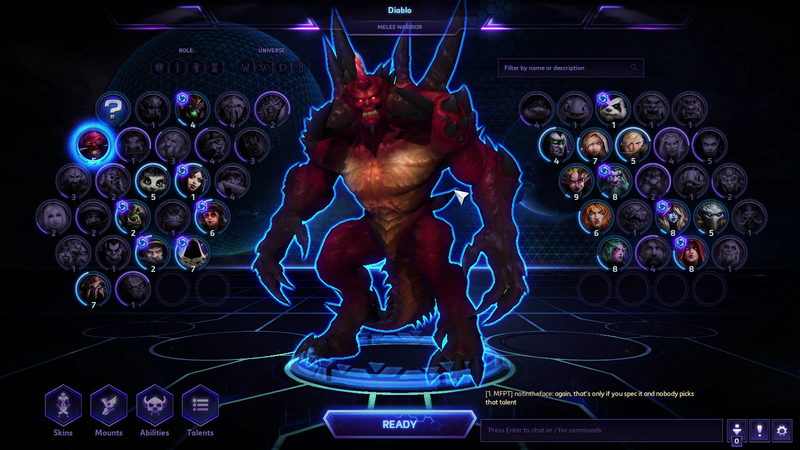
HoTS currently contains a staggering 10 maps available for quick match and ranked play, each requiring different tactics due to their individual features. A shared experience pool and a lack of gold (or items!) for players to collect encourages players to work towards team success, with the lack of an ‘All chat’ making it impossible for the enemy team to insult you.
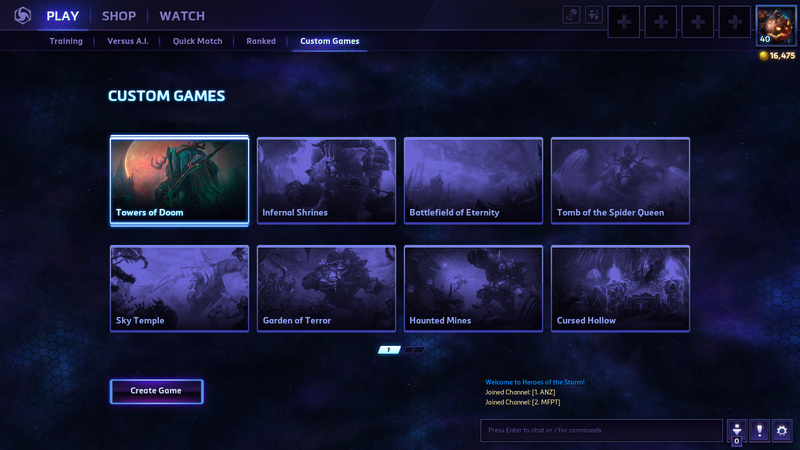
Further, the design of maps within HoTS shook the foundations of the MOBA genre, as each map comes with its own unique objectives that requires the entire team to collaborate, either to control certain points for a period of time or to collect tokens dropped by mobs to summon powerful units in exchange.
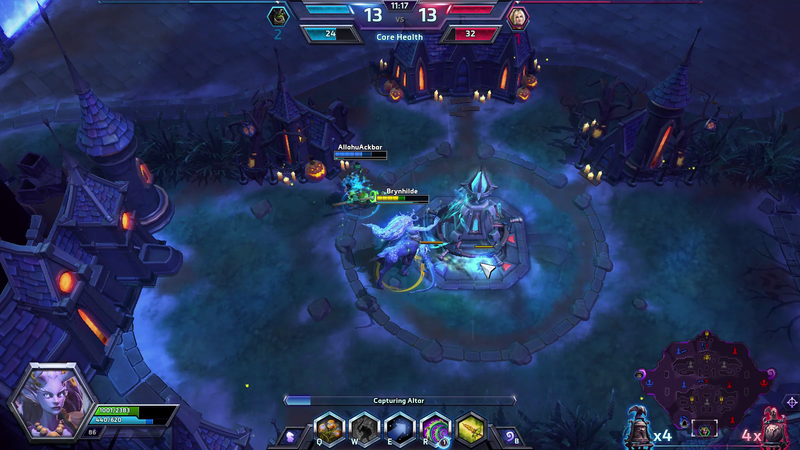
Further, defeating landscape ‘jungle’ units does not grant a player experience. Instead, defeated landscape units are ‘recruited’ as mercenaries, fighting on the side of those who defeated them, until they are killed once more.
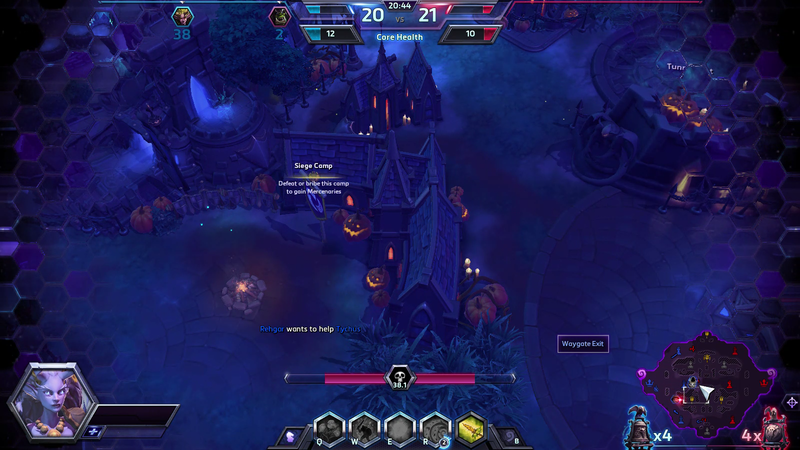
These two factors massively complicate gameplay, and are important enough to victory that players who do not participate in securing team/map objectives and instead pursue the traditional MOBA strategy of pushing a lane alone are frequently punished.
The different calculation and distribution of experience also encourages teamwork and discourages individual heroism. Traditional MOBAs grant experience on the ‘last-hit’ basis, when the player who dealt the last hit to a minion or enemy player gains the entirety of the experience from the kill. In HoTS, however, experience is shared across the entire team, making the matter of which player dealt the final blow rather irrelevant. This encourages all players to participate in kills and greatly reduces toxicity between players, as players in the same team no longer try to compete for the killing blow or accuse each other of kill-stealing when they lose out on valuable experience. Instead, players often cooperate in eliminating enemies, with it being fairly common to see players thanking one another or saying “good job” when someone finishes off a fleeing enemy. Shared experience also encourages suitable heroes to partner up in lanes, rather than one person trying to take all the available experience in a lane.
With the exception of certain enemies on a few specific maps, this shared experience is also the only ‘loot’ that enemies and minions drop. Different from other MOBAs, there is no ‘gold’ in HoTS, nor ‘items to buy’ or equip to one’s character. In many other titles, team mates not only fight over experience, but also over gold, which is again granted on the ‘last-hit’ basis. In these other games, players without sufficient gold cannot buy the equipment needed for their build, crippling their effectiveness. Instead of items, HoTS gives players a range of talents that their heroes may choose on levelling up, with all heroes on a given team levelling up at once. This ensures no hero can be upgraded individually, and that the entire team always improves together. There is a wide array of talents for each hero, allowing players freedom to customize their build according to the situation. Players who choose builds that complement those of their allies can unlock powerful synergies, making collaboration far more practical.
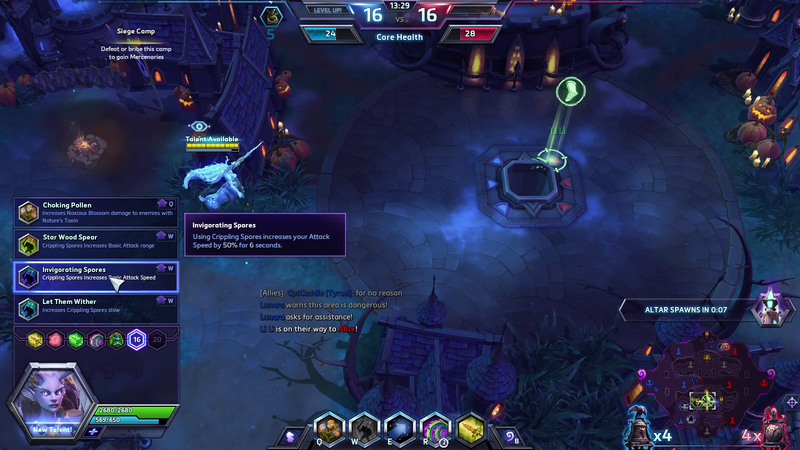
Through altering the design of a game’s systems, HoTS managed to curb toxicity even in the intensely competitive MOBA genre, shifting the energy used for intra-team competition to cooperation. And while the game certainly has its own limitations and its share of frustration, such the sometimes disorienting aural environment (a different sound is played when certain objects spawn, when a mercenary camp is taken by an ally or an enemy, when an ally or an enemy is killed, not to mention commentary when an objective is completed or when the core is under attack), it is quite notable for curbing glory-seeking and promoting teamwork, all through an alteration of the reward system.
The efforts behind this multi-million dollar AAA venture show that mechanics can change minds and promote certain behaviours. Perhaps it is too much to say that Blizzard was trying to promote empathy, but certainly it was trying to alter what it saw as problematic behaviour across an entire genre.
Notably, games – at least those not considered ‘serious games’ – are rarely looked at as examples or instruments of behaviour change. Yet today, there are more and more games that blur the line between these two definitions – which never was entirely clear to begin with, since some of the very first games were educational in nature. Solitare was packaged in Windows to help people learn how to use a mouse, as Halo was bundled with Xboxes to teach people how to use the Xbox controller – things no one remembers them for, even though they were very good at it. Today, there is the perception that serious games are the domain of academics and educators, and as such, are boring and not fun – yet Blizzard and other leading studios are using the same tools to drive similar agendas with very commercial titles. Heroes of the Storm, developed by one of the largest game studios in existence, is certainly not viewed by many as a ‘serious game’, yet its mechanics teach people the value of teamwork and decrease player toxicity – helping contribute to a player’s psychological well being in a small way.
And it is only one of several examples of large studios crossing into the realm of education and psychological improvement, along with the multitude of indie games and indie studios that draw inspiration from serious issues and explore these issues in depth.
As part of my series in this blog, the Heart of Design, I will be bringing to light some of the best examples of well-executed commercial titles that blur the line between game and ‘serious game’, showing that these two categories are not, in fact, distinct from each other.
And in fact, perhaps they never were.
-Bryn
Hours spent playing Heroes of the Storm: 70+ and still counting